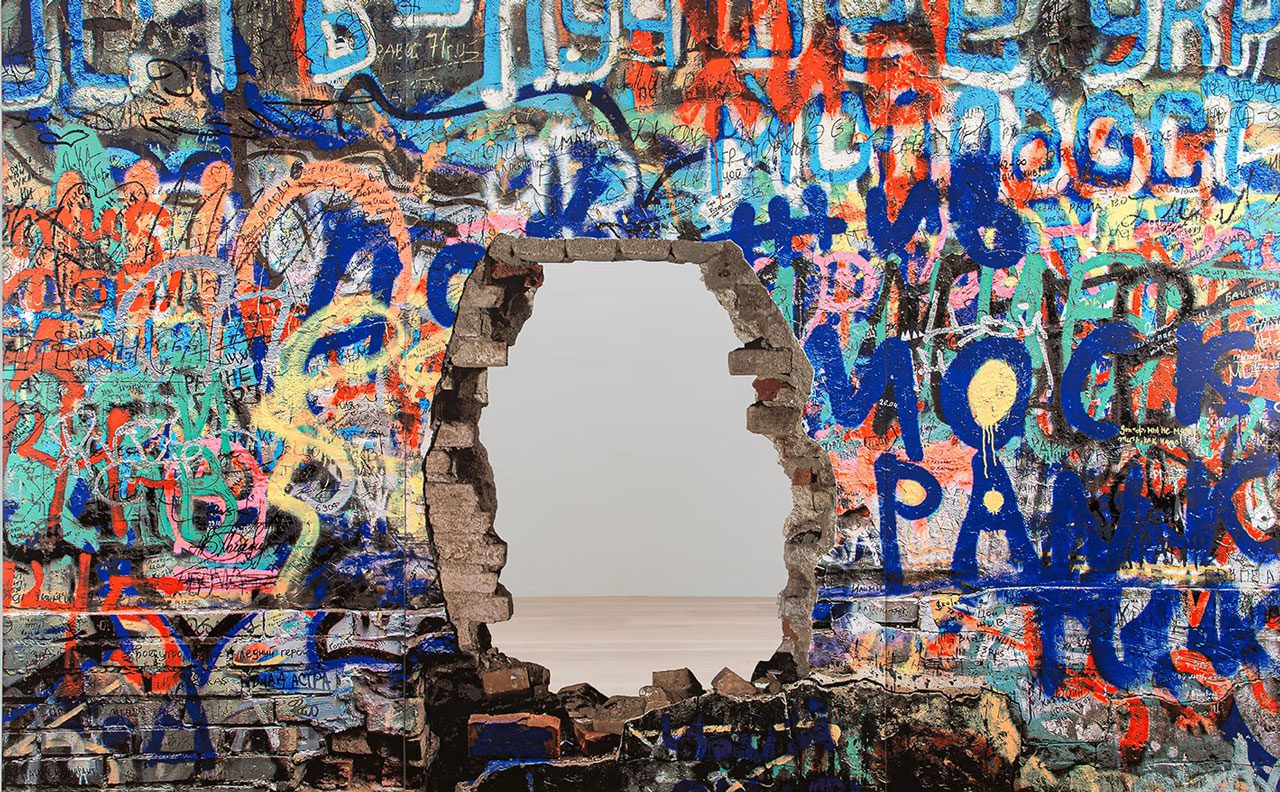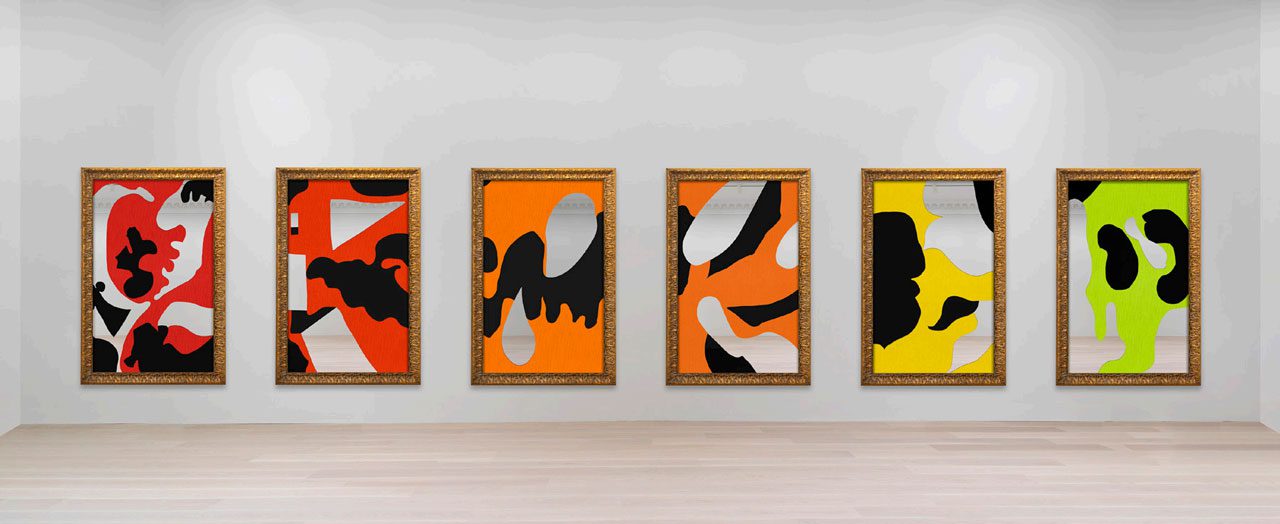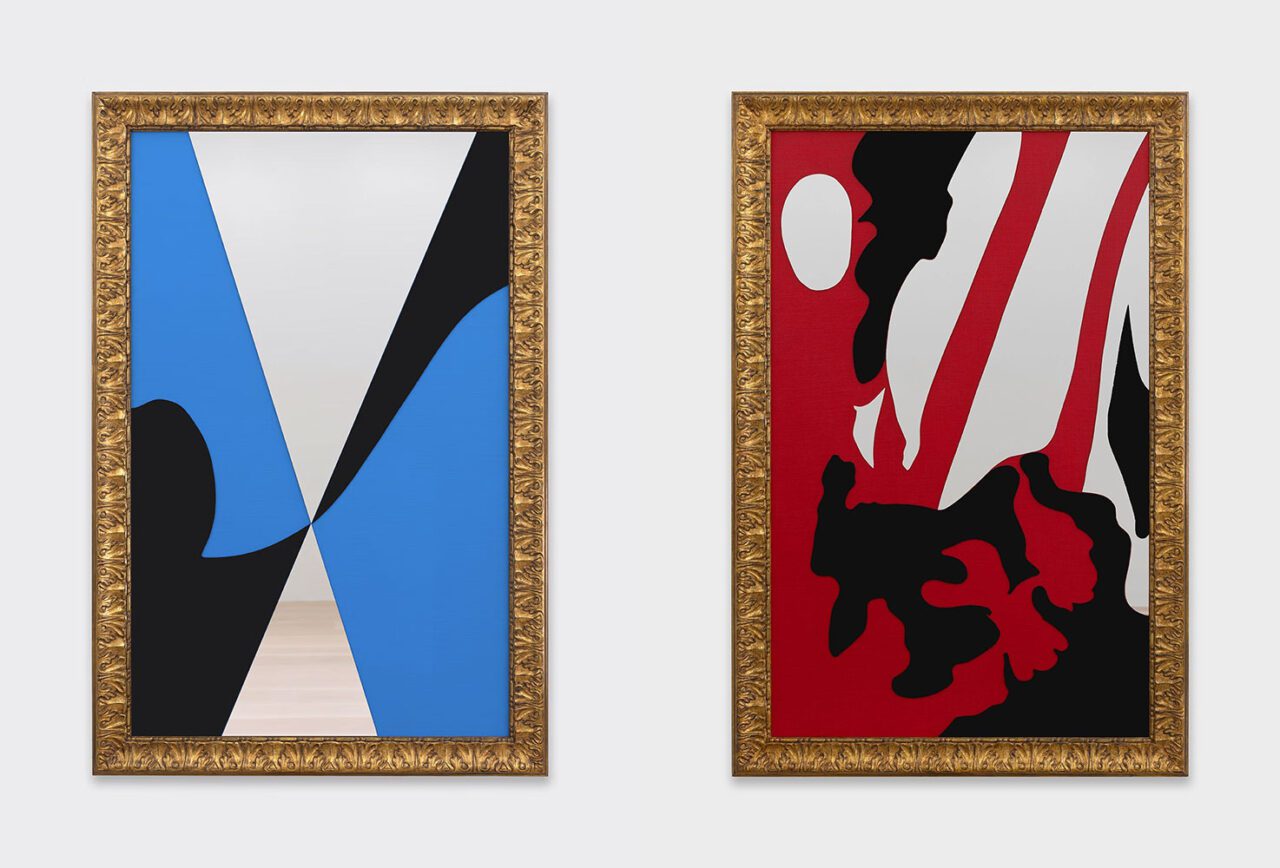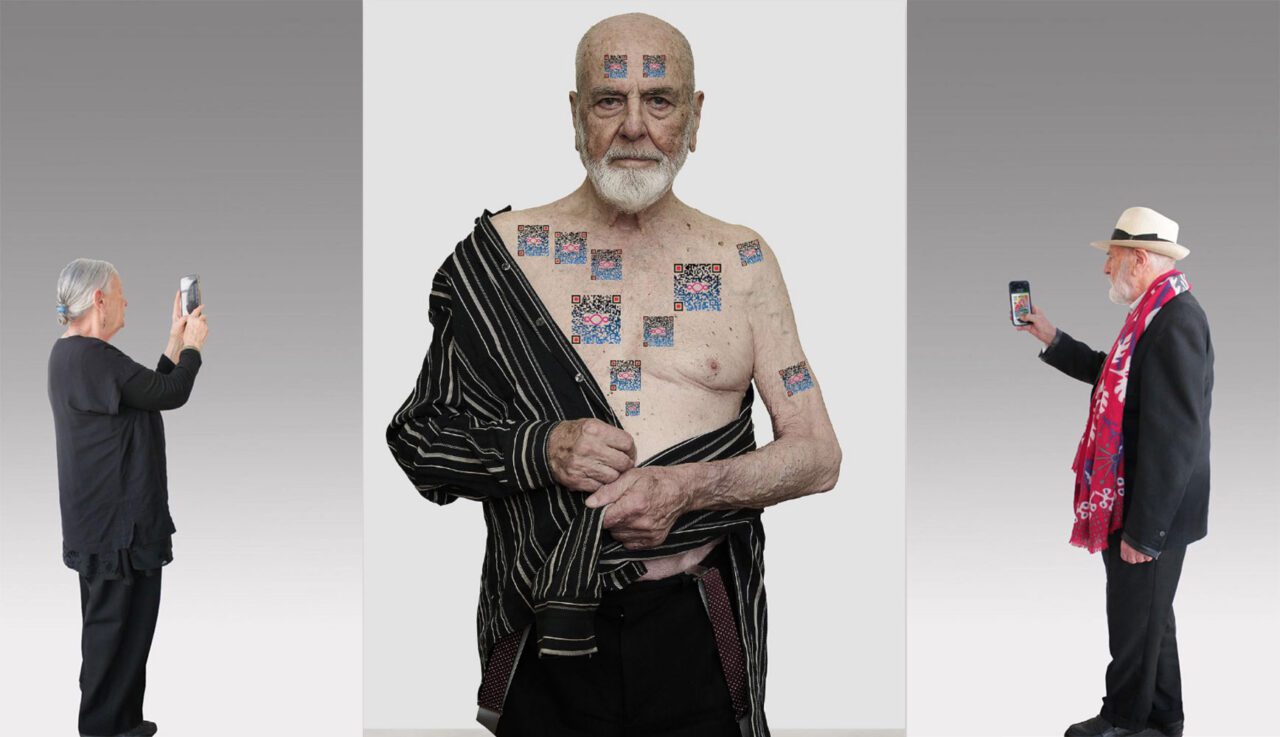PREVIEW: Michelangelo Pistoletto-To Step Beyond
 Michelangelo Pistoletto is a founding father of the Arte Povera movement and widely regarded as one of the most influential artists of his generation. For over half a century, Pistoletto has sought to merge art and life through sculptural installations, experimental performances, and, most famously, his iconic mirror paintings, which serve as the foundation of his artistic practice. Comprised of photo-silkscreened images on steel, these signature works were developed in 1962 and represent the artist’s dual interest in conceptualism and figuration.
Michelangelo Pistoletto is a founding father of the Arte Povera movement and widely regarded as one of the most influential artists of his generation. For over half a century, Pistoletto has sought to merge art and life through sculptural installations, experimental performances, and, most famously, his iconic mirror paintings, which serve as the foundation of his artistic practice. Comprised of photo-silkscreened images on steel, these signature works were developed in 1962 and represent the artist’s dual interest in conceptualism and figuration.
By Efi Michalarou
Photo: Lévy Gorvy Dayan Gallery Archive
By working with a reflective surface, the viewer becomes an integral part of the piece while the subject of the work is drawn into the activity of the gallery space; each mirror painting combines the past and the present, as well as pictorial and physical space. Michelangelo Pistoletto’s solo exhibition “To Step Beyond” features painting and sculpture spanning his practice from the early 1960s to the present, illuminating the radicality of his evolving oeuvre. In the words of Pistoletto, “If art is life’s mirror, then I am the mirror maker.” The exhibition highlights the artist’s use of the mirror in his practice, beginning with the historic painting “Uomo grigio di schiena”(1961). In the “Quadri specchianti” (1962–) that followed, Pistoletto activated space, perspective, and dimension to revolutionize the relationship between the work of art and the viewer. Tracing the progression of his postwar mirrored works to their final form in highly polished stainless steel, the exhibition presents examples of Pistoletto’s early photographic and silkscreened figuration with “Scala” (1964) and “Attesa n.1” (1973)—as well as the recent self-portrait “QR Code Possession – Autoritratto” (2019–23) and never-before-seen mirror paintings created on the occasion of the exhibition. Premiering is the most expansive “Color and Light” (2024) the artist has produced, created as an immersive installation for the Beaux-Arts gallery space at 19 East 64th Street. Initiated in 2014, the “Color and Light” series draws on themes of perception, time, history, and tradition that traverse Pistoletto’s oeuvre. Here, in gilded frames, silver and black cut mirror fragments feature against bold single-color backgrounds, hued in a spectrum from red, orange, yellow, and green, to blue. The work calls forth Pistoletto’s artistic beginnings, from his use of jute in his early career as a painter to his declaration of 1962, the first year of his mirrors: “On the one hand the canvas, in the other the mirror—with myself in between. One eye staring at the canvas, the other at the mirror. If you gaze at them intensely enough the objects gradually become superimposed: my mirror portrait transfers itself onto the canvas while remaining in the mirror, and the canvas transfers itself to the mirror becoming one with it.” Pistoletto once explained: “Some time ago, I wrote this sentence on the wall of my studio: ‘One must prepare oneself for being.’ My every action is in this direction.” His new and recent works hold true to this sentiment, from his sculptural mirrors that advance his foundational “Oggetti in Meno” (1965–66) to his prismatic, large-scale oil paintings of QR codes that harness technology to promote his social and environmental initiatives Third Paradise and Formula della Creazione. Pistoletto’s art creates the opportunity for confrontation, recognition, and interaction—to consider, in his words, “the state of things” and to step beyond.
Michelangelo Pistoletto was born on June 25, 1933, in Biella, a small town in the Piedmont region of Italy. Raised in a family steeped in artistic tradition, Pistoletto’s father, a painter and restorer, introduced him to the art world from an early age. This foundational experience had a lasting influence on his future endeavors as an artist. Pistoletto studied art in Turin, where he initially focused on painting and restoration. By the late 1950s, he was already creating self-portraits, exploring themes of identity and perception. His early works showed a keen interest in how the individual relates to the environment and society, concepts that would underpin his later masterpieces. In the early 1960s, Pistoletto gained international attention for his “Mirror Paintings”, a groundbreaking series that integrated the viewer and surrounding space into the artwork. Using highly polished stainless steel as a reflective surface, combined with painted figures or photographic images, these works challenged traditional notions of representation in art. The mirrors made the spectator a part of the scene, emphasizing the dynamic relationship between art, the observer, and the surrounding world. These pieces positioned Pistoletto as a leading figure in the Arte Povera movement. His first solo exhibition in the United States was held at the Walker Art Center, Minneapolis, in 1966. In 1967 he won a grand prize at the Bienale of São Paulo and the Belgian Art Critics’ Award. Also, in 1967 Pistoletto began to pursue Performance art, an interest that would expand over his career to encompass film, video, and theater. With the Zoo group, which he founded, Pistoletto presented collaborative “actions” from 1968 until 1970. Meant to unify art and daily existence, these performances took place in his studio, in public institutions such as schools and theaters, and on the streets of Turin and other cities. In the late 1960s and early 1970s, Pistoletto became a pivotal figure in Arte Povera, an avant-garde movement that sought to challenge established artistic conventions by using everyday, humble materials. His works during this period often addressed themes of time, transformation, and social change. One of his most iconic creations from this time is “Venus of the Rags” (1967), a juxtaposition of a classical Venus statue with a pile of discarded clothes, symbolizing the dialogue between historical ideals and contemporary society. Pistoletto’s later works expanded beyond the confines of the gallery or museum. In the 21st century, he introduced The Third Paradise, a concept and symbol that envisions a sustainable balance between nature and technology. Represented by a modified infinity symbol with three loops, it seeks to inspire collective action for social and ecological harmony. Pistoletto’s commitment to social transformation is also evident in his establishment of Cittadellarte – Fondazione Pistoletto in 1998 in Biella. This interdisciplinary space merges art, culture, and social innovation, promoting projects that address global challenges. Pistoletto remains an influential figure in contemporary art, blending aesthetics, philosophy, and activism to challenge perceptions and inspire change. His life and work exemplify a commitment to exploring the interconnectedness of art, humanity, and the broader world.
Photo: Michelangelo Pistoletto, Breccia nel grande muro, 2024, Silkscreen on super mirror stainless steel in three parts, 98⁷⁄₁₆ × 157¹³⁄₁₆ inches (250 × 400.8 cm), © Michelangelo Pistoletto, Courtesy the artist and Lévy Gorvy Dayan Gallery
Info: Lévy Gorvy Dayan Gallery, 19 East 64th Street, New York, NY, USA, Duration: 16/1-29/3/2025, Days & Hours: By appointment only, www.levygorvydayan.com/


Right: Michelangelo Pistoletto, Color and Light, 2024, Jute, acrylic, mirror, black mirror, and gilded wood frame, 70⅞ × 47¼ × 2½ inches (180 × 120 × 6.4 cm), © Michelangelo Pistoletto, Courtesy the artist and Lévy Gorvy Dayan Gallery


Center: Michelangelo Pistoletto, QR Code Possession – Autoritratto, 2019-23, Silkscreen on super mirror stainless steel, © Michelangelo Pistoletto, Courtesy the artist and Lévy Gorvy Dayan Gallery
Right: Michelangelo Pistoletto, Autoritratto con smartphone, 2024, Silkscreen on super mirror stainless steel, 98¾ × 49¾ × ⅞ inches (250.8 × 126.4 × 2.2 cm), © Michelangelo Pistoletto, Courtesy the artist and Lévy Gorvy Dayan Gallery

